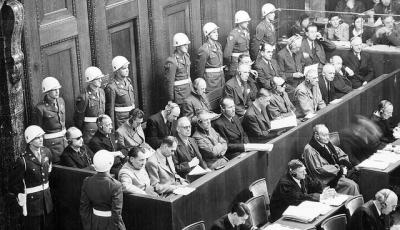The Nuremberg Legacy and the Crime of Aggression: A Promise Betrayed or Merely Delayed?
Posted:
Time to read:
This year will mark the 70th anniversary of the opening of the International Military Tribunal at Nuremberg, whose judgment indelibly branded aggressive war as “the supreme international crime.” There, for the first time in history, those responsible for “crimes against peace,” - “the planning, preparation, initiation or waging of a war of aggression, or a war in violation of international treaties, agreements or assurances” - were personally held accountable for their crimes.
Among the issues raised at Nuremberg was whether it was fair to prosecute individuals for planning and waging aggressive war when such action had never before been subject to criminal prosecution. Adherents to the Kellogg-Briand Pact of 1928 (including the major powers of the day), had pledged to renounce war as an instrument of national policy, but the Pact failed to provide criminal sanctions for its breach. By contrast, the judgment of Nuremberg served clear notice that henceforth, leaders who set in motion the unlawful use of armed force could look forward to answering for their crimes in a court of law.
Writing to U.S. President Harry Truman shortly after the Tribunal had rendered its judgment in October, 1946, the American Chief of Counsel, Robert Jackson, reported: “No one can hereafter deny or fail to know that the principles on which the Nazi leaders are adjudged to forfeit their lives constitute law and law with a sanction. . . These standards by which the Germans have been condemned will become the condemnation of any nation that is faithless to them. . . By the Agreement and this trial we have put International Law squarely on the side of peace as against aggressive warfare, and on the side of humanity as against persecution.”
Two weeks later, Truman himself, addressing the U.N. General Assembly, hammered home the point: “I remind you that 23 members of the United Nations have bound themselves by the Charter of the Nuremberg Tribunal to the principle that planning, initiating or waging a war of aggression is a crime against humanity for which individuals as well as states shall be tried before the bar of international justice.” By December, the General Assembly unanimously affirmed the principles of international law recognized by the Nuremberg Charter and judgment, and directed work to begin on the formulation of such principles within an international criminal code. Although the stage appeared set for operationalizing the Nuremberg principles, the Cold War delayed the process for over half a century. During this period, the International Law Commission developed draft codes, culminating in 1998 in the adoption of the Rome Statute of the International Criminal Court. Yet aggression would remain in legal limbo: the Court was to have only nominal jurisdiction over the crime. It was agreed in Rome that the Court’s aggression jurisdiction could not be exercised until and unless a definition and jurisdictional triggers could be developed and adopted at a Review Conference, to be held at an unspecified later date.
When the Review Conference finally met in 2010 in Kampala, Uganda, it adopted a definition and unanimously resolved “to activate the Court’s jurisdiction over the crime of aggression as early as possible.” But it was no secret that the permanent members of the Security Council objected to seeing a Court with independent jurisdiction over aggression. Because of this, the Kampala amendments contain built-in hurdles, specifically aimed at delaying or possibly even scuttling activation of the Court’s aggression jurisdiction. They provide that the Court cannot exercise its aggression jurisdiction until after the jurisdictional amendments are ratified by at least thirty States Parties and are re-approved by the ASP, at a point in time no sooner than January 1, 2017. The promise of Nuremberg that unlawful war-making itself would be banned by the effective enforcement of international law was, thus, put on ice for at least another seven years – by the very nations that had made aggression a punishable crime at Nuremberg.
Among the objections of those working to undermine activation of the Court’s aggression jurisdiction is the argument that it will dilute the Court’s capacity to deal with atrocity crimes. Yet, as highlighted at Nuremberg, illegal war-making is the greatest atrocity of all. Some say that criminalizing acts of aggression may jeopardize legitimate efforts at humanitarian intervention, but this is certainly a red herring. The necessity defense that exists in many criminal law systems is effectively imbedded within the definition of the crime of aggression itself, excepting acts which, as to their character, gravity, and scale fail to amount to “manifest” violations of the U.N. Charter.
As of this writing, 22 of the minimum 30 required States Parties have ratified the Kampala amendments on aggression, with further ratifications expected soon. Whether the legacy of Nuremberg in criminalizing the unlawful use of force will prevail is thus still an open question. I, myself, was born in Nuremberg, the son of one of the U.S. prosecutors there. Call me sentimental, but I’d like to see the true legacy of Nuremberg fulfilled. For my part, I have no problem burdening leaders who violate the U.N. Charter’s prohibition on the use of armed force with justifying the legality of their actions before a competent court of law.
Keywords:
Share:

